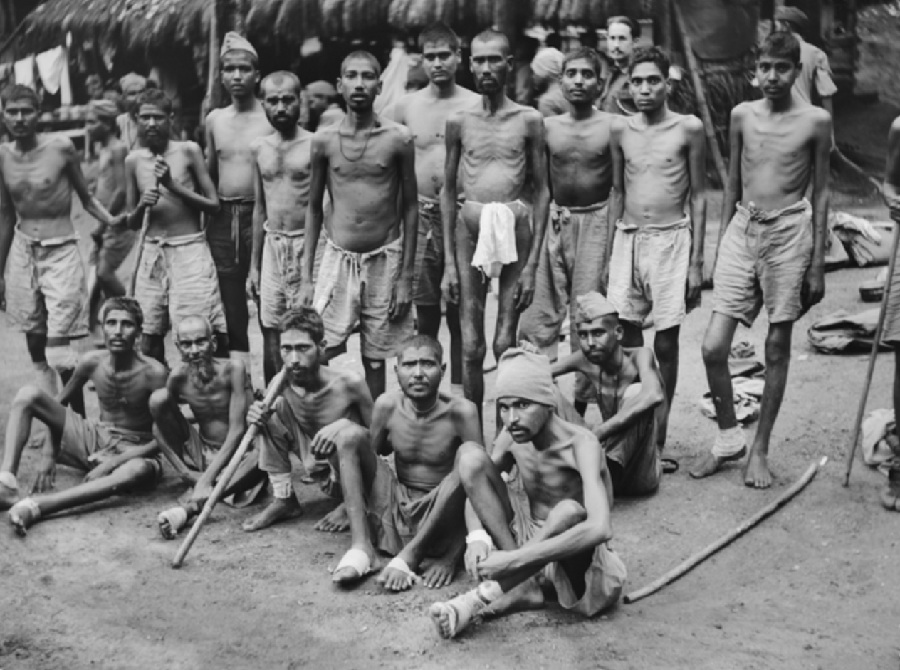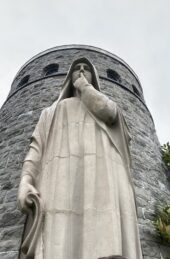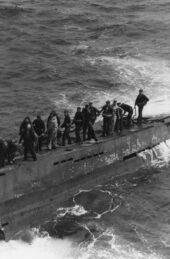Questions India myths about Subhas Chandra Bose, INA, are of great interest in India today
India’s INA history is largely focused on Netaji. Indeed he did a lot, but he had a lot of help. The book shows that the INA was not started by him, but 18 months earlier by the little-known Captain Mohan Singh. Without Singh there would have been no Netaji legacy.
Another myth is about the size/ impact of the INA in battle- it was actually very small, ill-equipped & not trusted, so not used to fight by the Japanese in 1944. It was miniscule, dwarfed by the Japanese army over 20 times larger at Imphal who did the fighting. Few died in combat, most of starvation/ illness. Only in 1945 did Japan use it to fight, but not to invade India but defend Burma for Japan that had nothing to do with Indian independence. Still ill-equipped, it was too late to make a difference. Again most losses were deserters and the sick.
Netaji took great risks in seeking Japan’s help to invade India, as they did not intend to let him rule occupied India freely. Pointed out to him repeatedly by Indians fearful of what would happen, he said leave it to me, I will handle it when the time comes. Fortunately, that time never came, and the INA succeeded instead in its propaganda role after the war.
My book tells story of brave INA soldiers little-known today as focus has been solely on Netaji
Through 4 episodes, the story of Major Misra, Major Ram Sarup, Flying Officer Latif, Major Pritam Singh, Havildar Shiv Charan Singh & Havildar Abdullah Khan have been told for the first time (I did not choose which men to focus on, but which stories, and coincidentally the heroes turned out to be 2 Sikhs, 2 Muslims and 2 Hindus).
It tells us what the Indian sepoy thought about the INA (this has been covered in 2 books in last 15 years but still unknown)
In reports of interrogations of thousands of INA men, we hear their voice. Many said they were coerced into joining, but an equal number did not care of the consequences when telling the British rulers of India, they did for love of country. Some said they followed the herd, others to escape as soon as they reached Burma, or to protect Indian women from being ravaged by Japanese soldiers. One even said he joined as he hoped he could fund his opium habit! In most cases, it was a complex web of reasons, most likely a combination of all of these.
90% joined Mohan Singh. Only a third were equipped by the Japanese, and from the rest Netaji tried to recruit more when he arrived a year later, but less than 10% joined Netaji – an astoundingly low figure given his stature.
Equally importantly, we hear after the war from jawans in the army who had not been a Singapore POW, some of whom fought against the INA in Burma – many had relatives in the INA – they said they should be let go, some did say that those who had killed Indian soldiers for not joining/ deserting the INA should be hanged.
Unearths the little known saga of 10,000 Indian POWs who died in Japanese labour camps in Papua New Guinea (PNG)
– Hellish sea journey from Singapore that lasted almost 2 months, in crowded cargo holds with only crouching space & just a cup of water/ day.
– The conditions they endured once they reached PNG
– The great debt we owe to Australia for how they sought justice for us by holding the Japanese to a/c through 100 war crimes trials
– Of the 10k deaths, 3k were at the hands of US submarines who sank any Japanese ship even if they knew there were Allied POWs on board. This may have been considered acceptable collateral damage, but the facts are not known and also not commemorated.
Tells us for the first time the audacious double cross of the Japanese by Lt Col Gill that turned into a Triple Cross of the British by his 2nd in command Major MS Dhillon. Pieced together from dozens of interrogations of those involved and other British reports, we have an almost day by day account of this audacity, including the fears and hopes of the men.
The Great Escape from Singapore – there are 3 books on these 2 escapes, unfortunately not that well-known and also out of print. So though this story is not new, I hope to bring more light to it through my telling it here, which also includes new sources that add to the narrative.
Brings to light poignant family stories
– Of wives waiting 5 years with no news of solider husband – followed by a Sudden Return or A Deafening Silence
– Most POWs did not speak about their war/ captivity when they returned.
– POWs experience in the rest of their life – PTSD, nightmares
– Reaction and Impact on the families – initially some were not interested, this changed later
– The decades long quest of a few families who did try to know more/ have the story told
Not covered in book, but prompts us to ask, why are these stories unknown?
Why has INA focus been only on Netaji, ignoring earlier leaders and soldiers under him?
First, as I understand it, the Past and present history telling
Days after WW2 ended, the British lifted the wartime censorship on the INA. Suddenly, news of its existence, along with stories of its valiant fight with Britain took India by storm – Though there were INA men who fought bravely when they got a chance, these were minor engagements of a few dozen men that had no impact on the overall battle that involved 300k Japanese and Allied soldiers. In fact, most of these minor fights were against fellow Indians in the Indian army , but portrayed as fights against the “enemy” implying the British. At the same time, Netaji had been declared dead in a plane crash on 18Aug1945 – with his disappearance in Jan1941 from Calcutta, an earlier announcements of his death in March 1942, his sudden reappearance in Berlin May 1942, in Tokyo in May 1943, and with this crash in far-away Taipei, no one believed this larger than life figure had died, and conspiracy theories of his survival continue to this day. A third simultaneous event galvanized India – a trial in the Red Fort of 3 INA officers accused of treason. It was quite natural that at that time, the focus of the press was on Netaji and, the 3 officers, though it is sad that the 7 INA deserters who were caught and sentenced to death by them are unnamed (till now)
In post-war memoirs, INA seniors seem embarrassed to have joined Singh, but happy to have joined Netaji. Some even denied their early involvement, though the archives show they were enthusiastic participants under Singh from the start, and even if they had inner doubts about him (as some claim), they joined and none dared to raise his voice when Singh was in charge. Singh was certainly no Bose, but why were they embarrassed? Was it because he was just a middle-class junior officer who had risen from the ranks, like a “chai-wallah” of today? Another way of looking at this is revealed in a letter written by Singh in the 1970s to his post war interrogator Major Hugh Toye, where he says an interesting thing – it could sound like jealousy (at being eclipsed) but to me Singh hits the nail on the head when he says the INA memoirists ”Must project Netaji as a superman.. to bask in his limelight, like a priest extols virtue of god to increase their importance.”
Post 1947 India focus was on history of independence movement – my memory is not universal, but as a student in a Delhi private school in 70/80s, I recall 4 heroes – Gandhi, Nehru, Bose & Bhagat Singh. The narrative was that they worked in different ways to gain independence.
In 20th century histories, many others were known in the Gandhi/ Nehru world, eg Azad, Asaf Ali etc. However, those who wrote about the INA focused largely on the mesmeric Netaji who eclipsed everyone, not just the leaders before him like Mohan Singh, Rash Behari Bose, Giani Pritam Singh but also the soldiers under him about whom we have heard nothing (so far). This does happen elsewhere, but nonetheless we must ask why?
The recent narrative continues this Netaji focus and adds an anti-Gandhi/ Congress element- saying Gandhi had no role in getting independence, only Bose, and that Nehru was an opportunist. Certainly the impact of the INA had a key role to play in Britain’s decision to leave India, but to say that Gandhi had no role is wrong.
Even if we stick to the INA world, again Netaji’s predecessors and soldiers are ignored – it appears as if no one existed except him. Why and how this has happened is a mystery to me.
PNG
– After independence, India did not focus on its colonial army, Britain wrote more about its war with Hitler, and even its books on Asia focused on British/ Australians, so no one wrote about the Indians. Australia took their evidence, held 100 war crimes trials (for which we owe them a great debt) and then moved on as well.
Family
As seen above, most POWs did not want to relive the war, and the some families were not interested, so the memories were lost
Striking cover and sketches inside that tell the story vividly – all other military history books use old photos, most have little to do with the men/ events involved. See above for link on the doc with images.
New sources The new stories mentioned above are told through materials in British and Australian records in Indian/ Australia archives so far not used in any book as well as family memories/ documents revealed for the first time
Gautam Hazarika is the author of The Forgotten Indian Prisoners of World War II, published by Pen & Sword.







